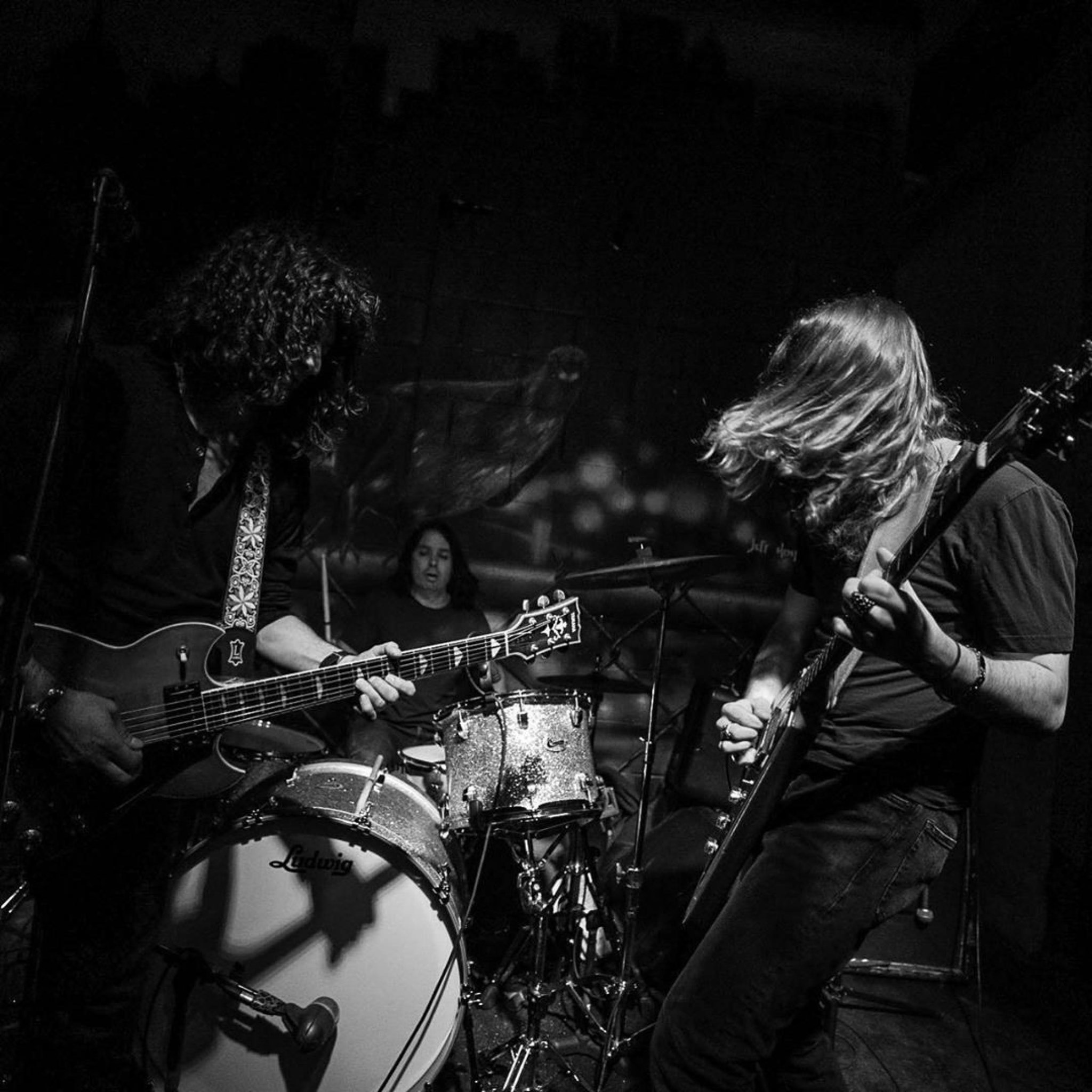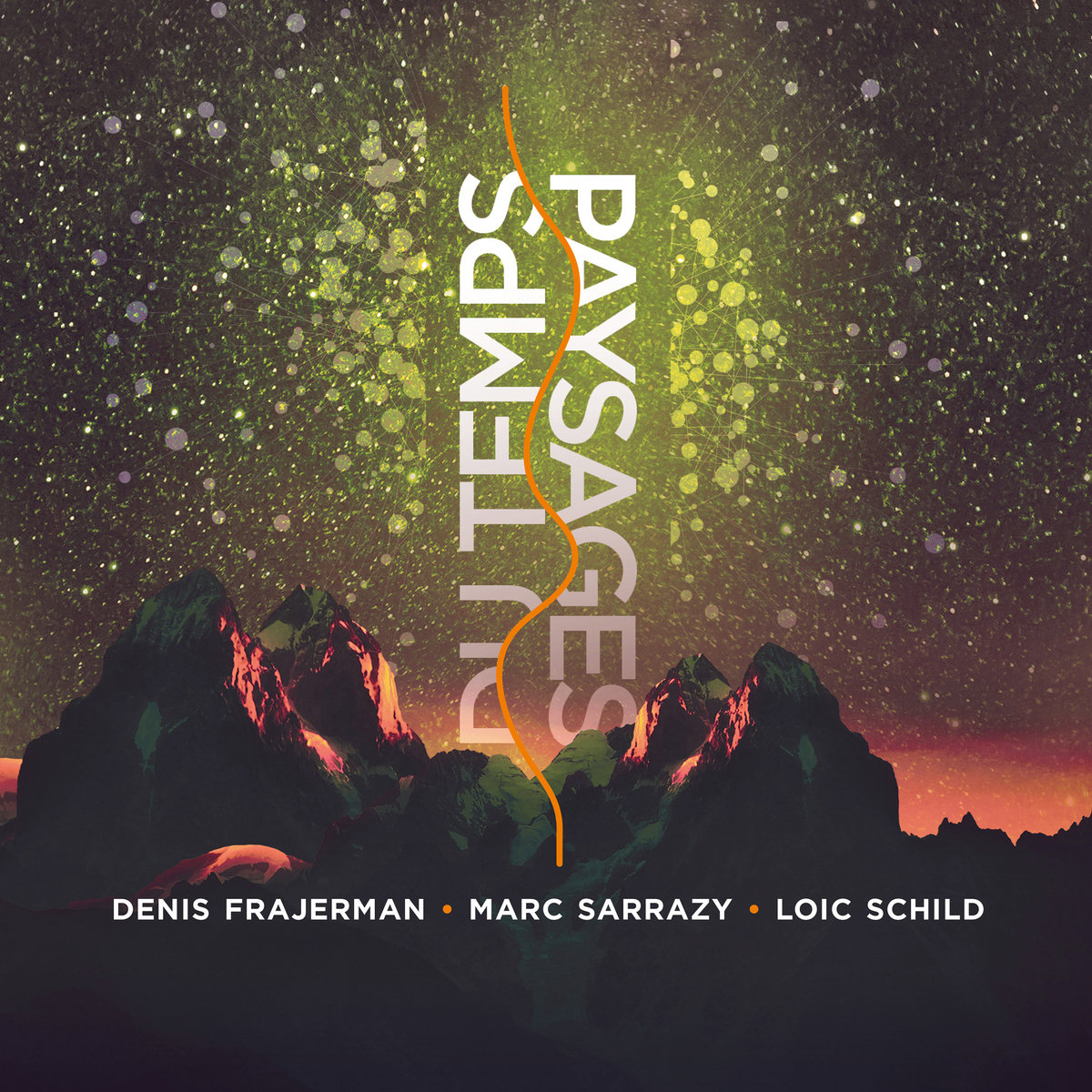Vision Eternel | Interview
Vision Eternel is a Canadian-American melogaze band whose musical creations focus on emotion, heartbreak and love. Melogaze, coined by founder Alexandre Julien, has been described as a blend of ambient, space rock, shoegaze, post-rock, emo and melodrama. The band was founded in January of 2007 in Edison, New Jersey, USA; and is currently based in Montreal, Canada.
‘For Farewell Of Nostalgia’ is Vision Eternel’s newest concept album. It is a narrative of how emotionally devastating falling in love too fast can be and the aftermath of a heartbreak. Sometimes, looking for tender affection can be detrimental; this tale of infatuation, wounding absence, intimacy, melancholia and never-ending nostalgia intends to make the listener feel every bit of that. A short story accompanies the release, which recounts the events that influenced this concept album.
“Love Within Isolation”
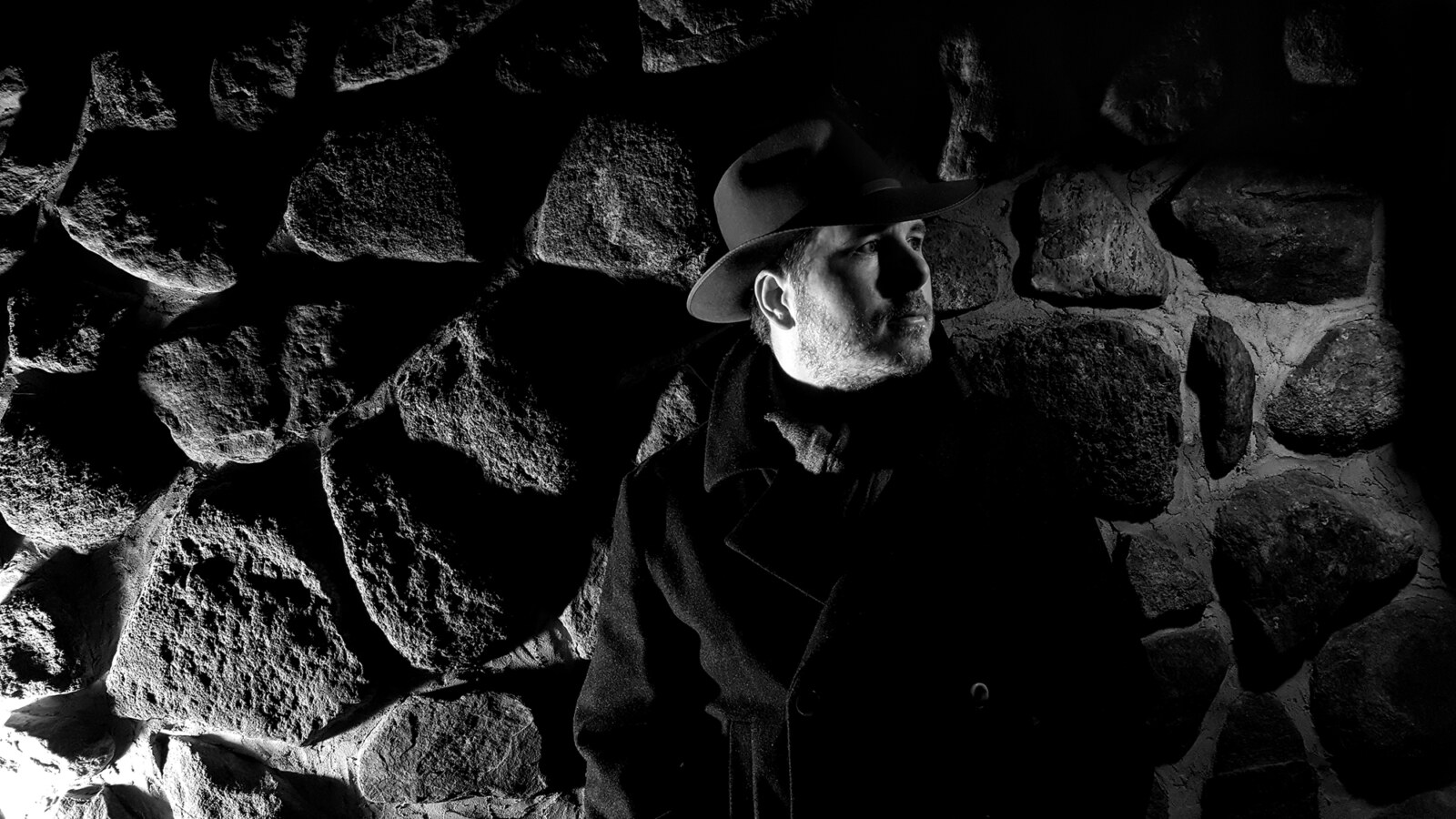
Your sound is focused on emotion, heartbreak and love. What was the main concept when starting with Vision Eternel?
Alexander Julien: I started Vision Eternel in January 2007. At the time, I was very depressed about an ex-girlfriend; a past relationship from which I was unable to move on. I did not set out to compose sad songs influenced by this heartache; rather, I simply began playing my guitar one late and lonely night, with no direction or influences. What came out from my fingertips was a really peaceful and beautiful short piece that I later titled ‘Love Within Beauty’. That was the first Vision Eternel song. I was also experimenting with different reverb effects at my then-newly built recording studio Mortified Studios, so it added to the atmosphere of the song and made it kind of dreamy.
At first, I was not sure how I would utilize this song. I assumed that it would end up as an interlude, perhaps like Killswitch Engage had done with their songs ‘Inhale’ and ‘And Embers Rise’ on their album ‘The End Of Heartache’. But a day or two later, I was sitting in my bed with one of my guitars and I began to play, uninhibitedly, another really beautiful short piece. This one later took on the title ‘Love Within Isolation’. It was at this point that I decided to dedicate a new band to these songs and I began planning out a concept extended play themed around the relationship that had caused my heart to break.
I cannot recall the order in which I composed and recorded the remaining pieces of Vision Eternel’s debut extended play, but by early February, ‘Seul Dans L’obsession’ (meaning Alone In Obsession in French) was finished. There were seven compositions on the release, including the untitled extended portion that was added to the end of ‘Love Within Isolation’, as an outro, during the recording. The six main songs were titled ‘Love Within Beauty’, ‘Love Within Restriction’, ‘Love Within Autumn’, ‘Love Within Narcosis’, ‘Love Within Delirium’ and ‘Love Within Isolation’; the six phases that I went through from meeting the girl, through the break-up, and my pain and isolation afterwards.
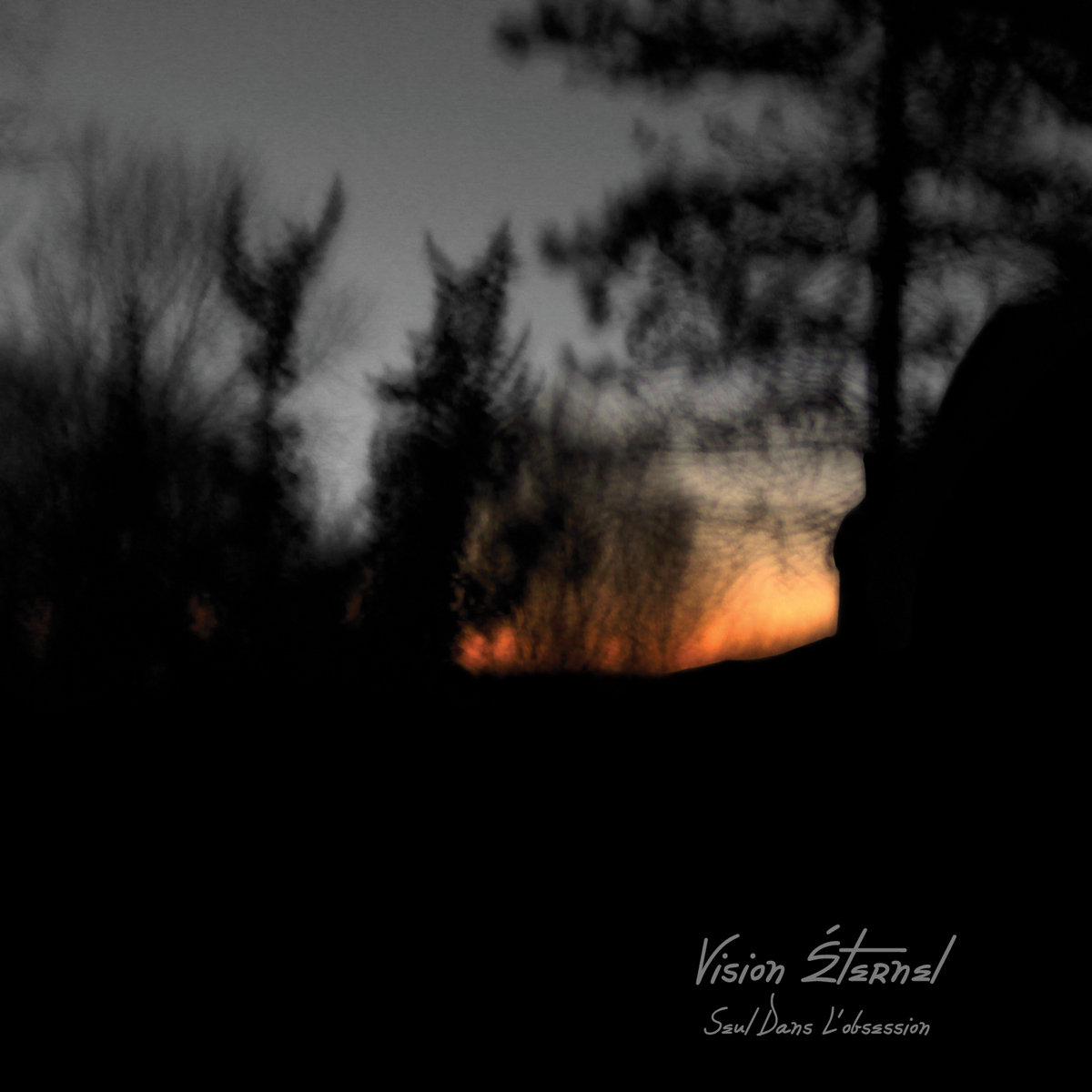
I normally approached friends to design my album covers but because this release was so personal, so intimate, I decided to handle the artwork and layout myself. I also chose to release ‘Seul Dans L’obsession’ on Valentine’s Day, February 14, 2007; that was part of the broken-heart concept. To help promote it, I directed a music video for the single ‘Love Within Narcosis’. Although I had planned on making music videos in the past, this was my first time completing one, and my motivation behind it was that this release meant so much to me that it needed something special.
Surprisingly, bottling up and packaging my pain into a sound recording helped me move on from the relationship. I found myself listening to it very often over the following days, weeks, months and even years. It is sometimes difficult to listen to one’s own music because of the overly critical attention to detail one has towards one’s own work. But ‘Seul Dans L’obsession’ was done without any compromises, without the input of any other artist but myself, so it sounded exactly the way that I wanted it to; it sounded the way that I felt; it was sonically connecting to my heart and that was very comforting.
After the release of ‘Seul Dans L’obsession’, I was unsure of Vision Eternel’s future. I did not immediately see the potential that I had created with it. But that was normal because the release needed to sink in and get processed, not only through my system but also by promoting it to the public. Four months afterwards, I began composing music for Vision Eternel’s sophomore concept extended play, ‘Un Automne En Solitude’. That second release was planned, composed and recorded between May and August 2007, but it was not released until nearly a year later, on March 14, 2008. The delay was purposeful because I did not want to be one of those ambient bands with multiple releases every year. I have always believed in quality over quantity.
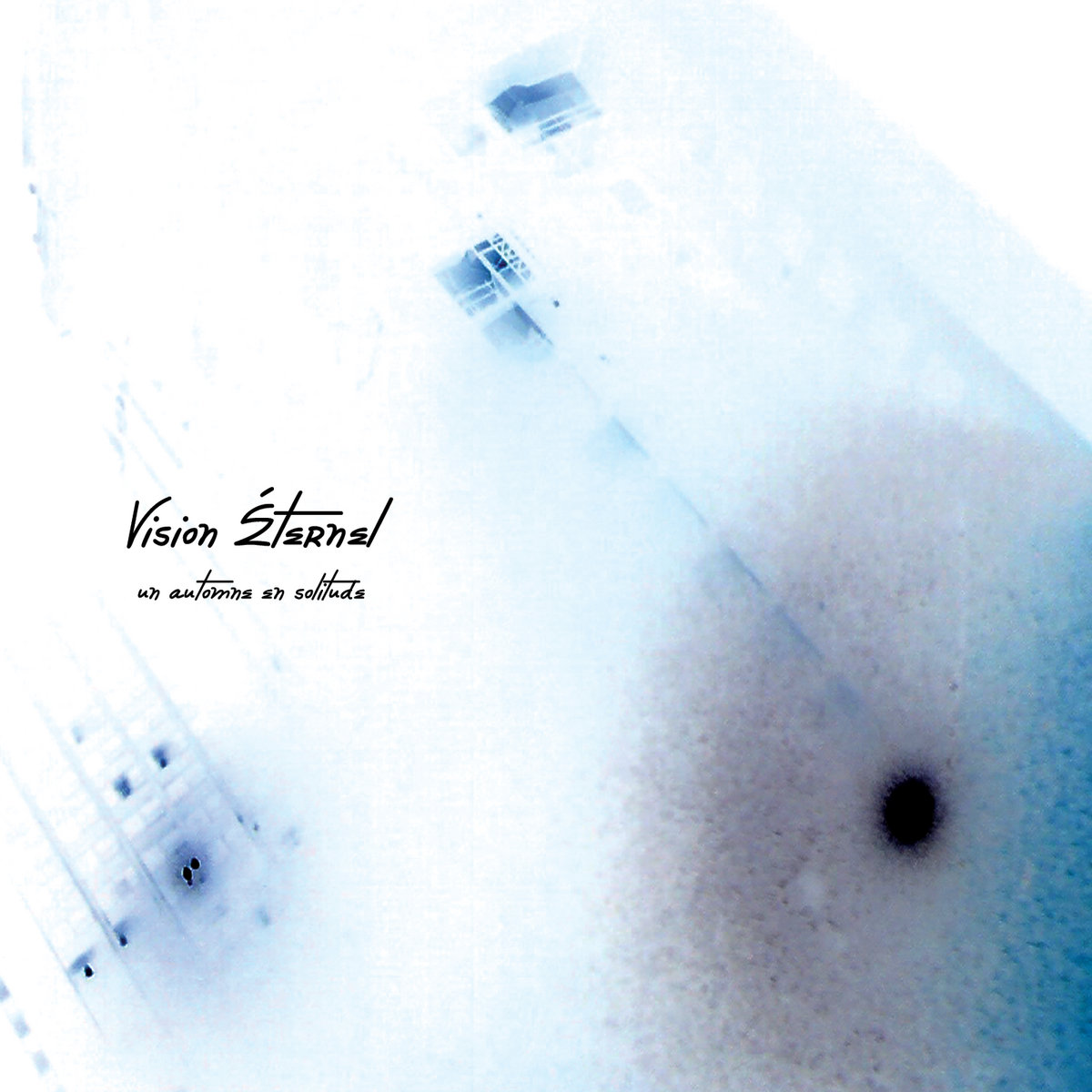
‘Un Automne En Solitude’ established the conceptual story-line by introducing the boy meets girl, boy loses girl; boy meets girl again, boy loses girl again theme. In other words, I met a girl, fell in love, then was broken-hearted; found another girl, fell in love, then was broken-hearted again. That was a direct influence from Alfred Hitchcock’s ‘Vertigo’ (my favourite film), though it was not a deliberate influencer at the time. I only realized the connection later on, after remembering that I had been watching the film nearly every day during that era. The film, too, had become an obsession.
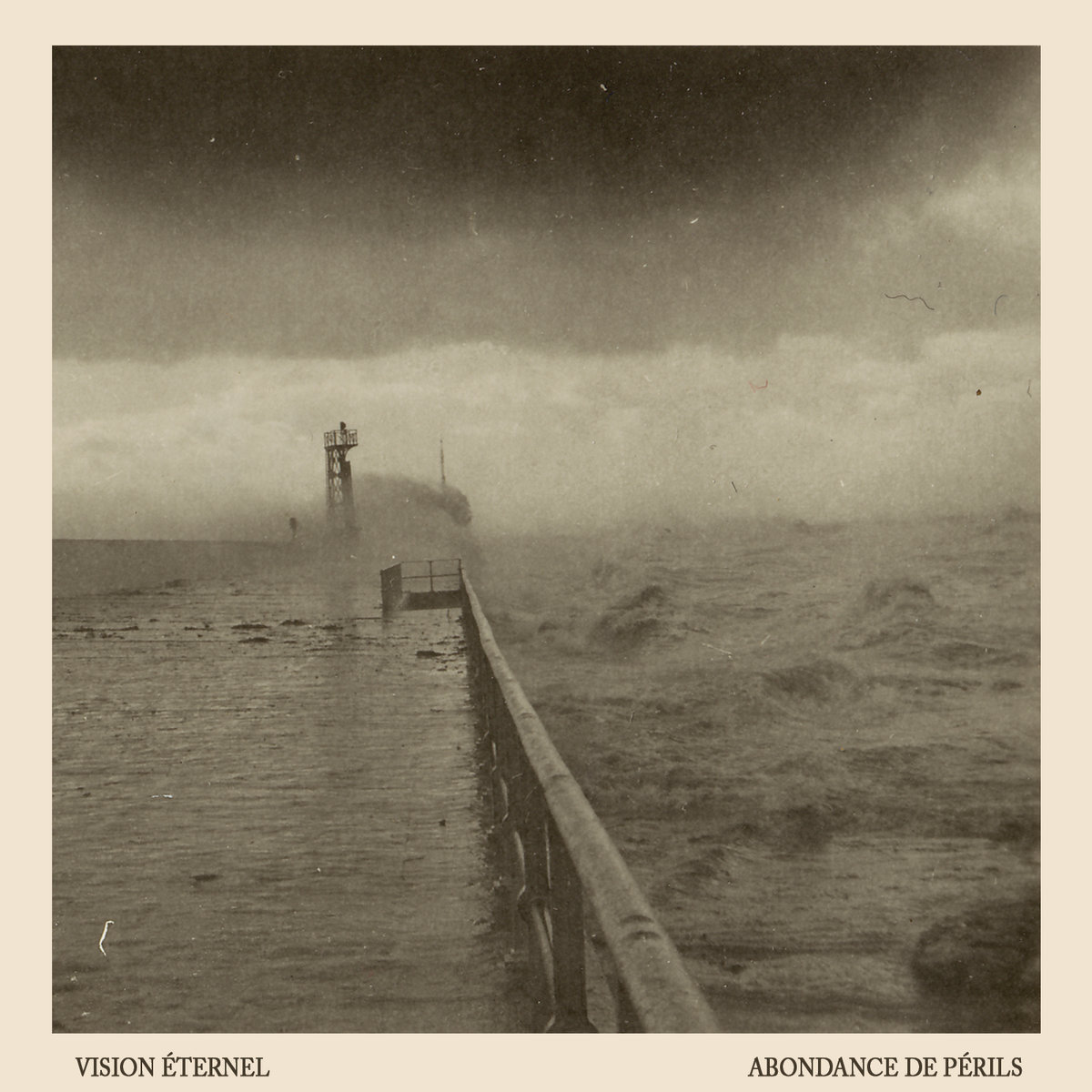
‘Seul Dans L’obsession’ (2007) and ‘Un Automne En Solitude’ (2008) are bridged by that continuous story-line. The newer release picks up where the former left off, documenting another past relationship.
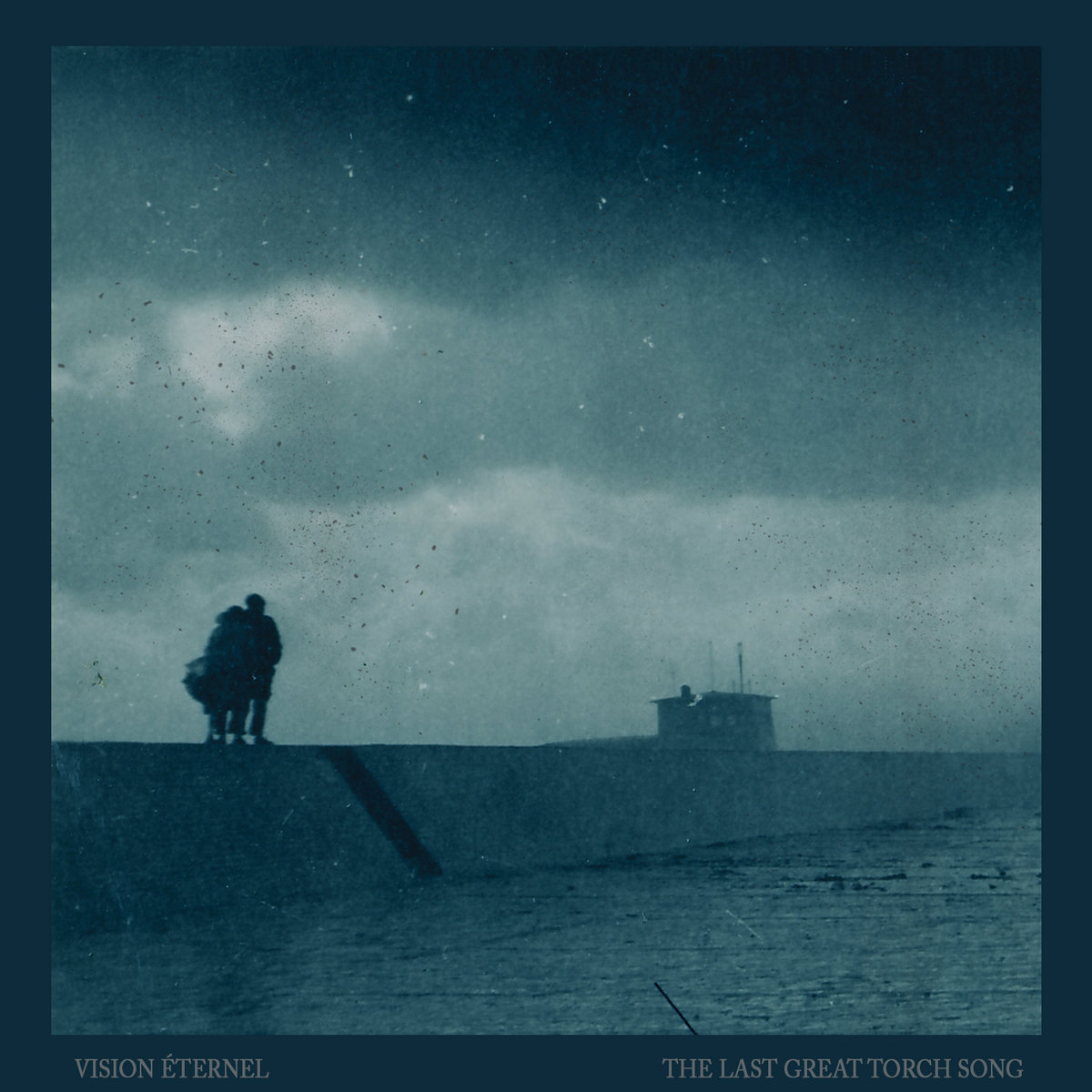
That greater concept carried through ‘Abondance De Périls’ (2010), ‘The Last Great Torch Song’ (2012), and most recently, ‘For Farewell Of Nostalgia’ (2020). The 2015 concept extended play ‘Echoes From Forgotten Hearts’ is excluded from the story-line because it was originally composed as a soundtrack.
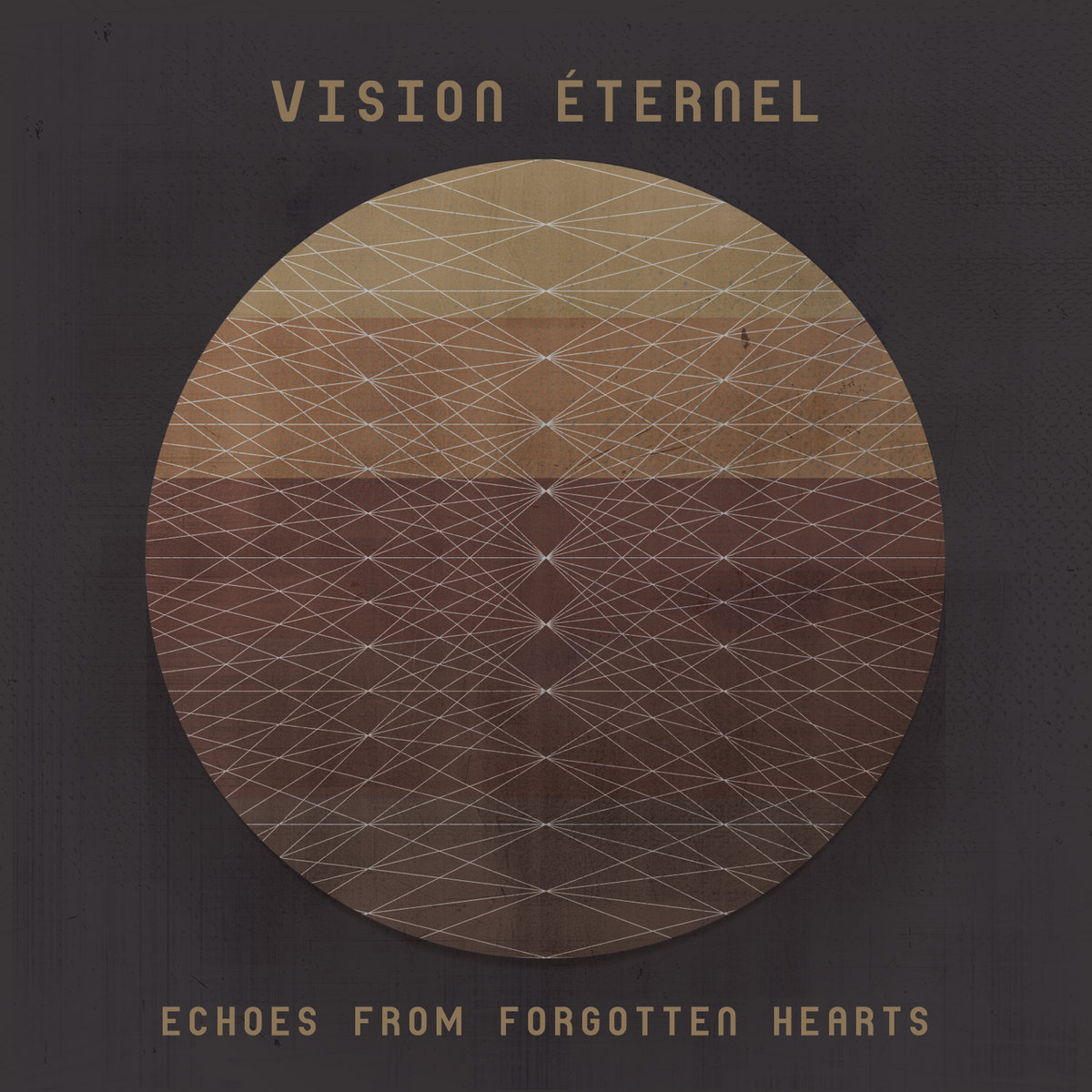
Would you like to talk a bit about your background? How did you get first interested in music? What kind of music did you listen to as a young teenager?
My earliest exposure to music was likely what my parents listened to. My father liked folk and folk rock, progressive rock, heartland rock and some pop. I remember that he had a medium-sized record and tape collection, with such artists as Cat Stevens, Harmonium, Genesis, Phil Collins, Peter Gabriel, Jethro Tull, Elton John, John Cougar, Bruce Springsteen, Pink Floyd, Eurythmics, The Pretenders, and The Police. There were quite a few more but those are the ones that stand out as having more than one album from his collection.
My mother’s taste in music was less elaborate; she was content with what was on the radio.
She was a talented craft artist (as was my maternal grand-mother), but music was not something important in her life. She never understood music, nor really appreciated it; to her it was just another one of those things. But I do recall that she had tapes of Celine Dion, Julien Clerc and Cirque Du Soleil soundtracks. I was probably exposed to a lot of pop hits on the radio through my mother that way.
My parents were not avid television watchers, but it was certainly on for an average amount of time, especially with a child in the home. So I was definitely exposed to hundreds of television show theme songs and movie soundtracks from my parents, or myself, watching television as an infant. My parents each had their own cars, and there was a decent amount of commuting, from my parents condo (and later house) to my grandparents houses and cottages and various family friends. So a great deal of the music that I heard in my childhood was from tapes, or on the radio, played in the car.
As a child, I did enjoy listening to music but it was nowhere near as important as it later became in my teenage years. I occasionally listened to pop rock radio on my own, or borrowed my father’s tapes to play on my Walkman, but it seems to me that, in hindsight, it was more of an occasional event, not a regular routine. Some of the hit singles that I remember discovering and enjoying for myself were Smash Mouth’s ‘Walkin’ On The Sun’, The Offspring’s ‘Pretty Fly (For A White Guy)’ and Chumbawamba’s ‘Tubthumping’.
Many years later, I found out that several of my extended family members were artists, some played instruments, and a couple had even been in established bands that released music and played shows. But none of that was ever shared with me by my immediate family. I was oblivious to that artistic side for a long time. My parents pushed me towards academia rather than artistry.
Perhaps partly because of this, I was exposed to more reading material than music. I was an avid, and obsessive, reader; I took books everywhere that I went, even to summer camps. I was much more interested in reading books as a child, rather than listening to music or watching films. By the time that I was ten years old, one of my poems had been published in a local newspaper and I had written an unpublished short story. I had also co-written the lyrics to a song with my cousin Maxime Julien. But I did not see myself as a writer nor had I any interest in pursuing that path. The writings that I had done were mainly one-off leisurely projects; I did not see it as an art form. I was extremely shy about it.
I moved from Pierrefonds, Quebec, Canada (a suburb of Montreal), where I had lived for the first eleven years of my life, to Edison, New Jersey, United States in October 1999. It was a considerable change in my life and there were some very difficult and emotional times, but I assimilated extremely quickly. It was in New Jersey that I began taking in a great deal of new music, principally from my friends Jeremy Roux and Andrew Palladino. They were responsible for introducing me to my own music, so to speak. Through them, I discovered Limp Bizkit, Korn, Metallica, System Of A Down, Rammstein, Marilyn Manson, Incubus, The Smashing Pumpkins, Staind, Flaw, Linkin Park and Saliva. My first two CDs were The Offspring’s ‘Conspiracy Of One’ and then Limp Bizkit’s ‘Chocolate Starfish And The Hot Dog Flavored Water’; I still enjoy them both today.
In 2003, I met Thomas Nunziata. Tom was responsible for introducing me to a whole new level of music, slightly more underground but not necessarily unknown; just a little less popular than the chart-topping artists that I had heard up to that point. Artists that were not necessarily household names, like all of Mike Patton’s bands: Tomahawk, Fantômas, Mr. Bungle, Lovage, and most importantly Faith No More. I quickly became obsessed with Faith No More and they became my favourite band; they still are to this day. Tom also introduced me to Tool, A Perfect Circle, Melvins, Secret Chiefs 3, Porcupine Tree, Opeth, Dog Fashion Disco, Kyuss and Queens Of The Stone Age.
In 2004, I met Howard Change, the last of my major musical influencers. Howie was really connected with the extreme metal scene, specifically black and death metal. He introduced me to bands like Burzum, Emperor, Immortal, Dissection, Mayhem, Darkthrone, Enslaved, Mütiilation, Susperia, Nargaroth, Nachtfalke, Naglfar, Satyricon, Bathory, Behemoth, Death, Nile, Hypocrisy, Immolation and Suffocation, amongst many, many others. Through Howie, I met Eiman Iraninejad; the two of them had played in a band beforehand and were the local extreme metal-heads. Eiman introduced me to a handful of thrash metal bands like Slayer, Kreator and Exodus, and shoegaze band Slowdive.
I branched off from there and explored the hardcore, metalcore, emo and post-hardcore scenes on my own for several years; then got into the post-metal, sludge metal and post-black metal scene briefly through my record label Abridged Pause Recordings. My interest in discovering new, up-and-coming bands has decreased over the last ten years and I do not listen to that much music anymore. Most of the time, I enjoy listening to things that I am already familiar with.
When did you decide that you wanted to start working and performing your own music? You played in a wide variety of bands.
My very first band was called Les Rocker’s and consisted of my sisters and I playing cover songs. Over the last several years, I have attempted to research this band extensively and I believe that it was active in early 1999. The most notable song that we played was The Offspring’s ‘Pretty Fly (For a White Guy)’. We practiced in the basement of my parents’ house in Pierrefonds and occasionally performed when family members visited.
My friend Jeremy Roux purchased his first guitar in 2002, so, of course, I asked for one as well later that year during the holidays. My birthday is only half of a month after Christmas, so generally, that opened up the opportunity for family members to give me one big gift to cover both occasions. My maternal grand-mother, Pierrette Bourdon, who was a very talented craft artist and always encouraged my creativity, be it in music or writing, offered to procure the musical instrument. She turned to my cousin Francois Bourdon, who had played bass in his teens and was then working as a cinematographer in the film industry and as a disc jockey at events and parties. He knew a second-hand store that specialized in refurbishing guitars and picked out an incredible assortment of gear for me to start with. Had it been anyone else, I may have ended up with a starter acoustic guitar, which would have surely abrupted my interest in the instrument. What I actually received for Christmas 2002 was a black Renegade super-strat electric guitar (it really looked like a metal guitar), a Fender amplifier with a distortion setting, a lengthy ¼ inch orange cable (very fashionable), a tuner, a strap, a carrying gig bag, an additional set of strings and an assortment of picks.
I found out that my friend Andrew Palladino owned a bass and he was the first person that I practiced with. He taught me how to play a few easy songs, such as Marilyn Manson’s ‘Sweet Dreams (Are Made Of These)’, Green Day’s ‘Brain Stew’ and Deep Purple’s ‘Smoke On The Water’.
About five or six months after receiving my first guitar, I composed my first song. It was titled ‘Break’. In June 2003, I formed my first band, The Slopin Fairy 7; the name was influenced by mis-interpreted words whispered by Fred Durst at the beginning of Limp Bizkit’s ‘Counterfeit’. The Slopin Fairy 7 recorded an EP of mostly covers in August 2003, followed by a single and a full-length before the end of the year.
During the summer of 2003, I also played in an acoustic folk duo with Thomas Nunziata called The Tom & Alex Project; it was a play on The Alan Parsons Project and we performed comedic songs about volunteering for the American Red Cross in Plainfield, New Jersey, where we had originally met. We were working on an extended play tentatively titled ‘Songs For The Red Cross Of America’. For most of 2004, I played in Scapegoat with vocalist Jonathan Plungis. Andy Palladino was invited to join on either bass or keyboards but he never committed. Scapegoat started out as a nu-metal project, highly influenced by System Of A Down, Limp Bizkit and Mushroomhead, but through Jon’s influences, we started incorporating metalcore elements, from the likes of Eighteen Visions, Bleeding Through, Throwdown, Killswitch Engage and Lamb Of God.
The last song that I wrote for Scapegoat was a power ballad titled ‘Ballad For A Goddess’; this song was heavily re-arranged as I transitioned into extreme metal, becoming the first Throne Of Mortality song. Throne Of Mortality was co-founded by vocalist Howard Change and I and we started out as a death metal band. But I quickly found out that I much preferred playing black metal (and so did Howie); I was not an apt-enough guitarist to play quality death metal. Once Throne Of Mortality became a black metal band, I started a side-project called Projection Mina for all of my death metal and thrash metal compositions.
Throne Of Mortality went through several drummers and bassist before Howie decided to play bass himself. But Howie eventually had to leave as well to attend university. So I ended up taking over the vocal and bass duties. I recorded and released several demos with Throne Of Mortality but I was never able to complete the two extended plays that were prepared because the band could not secure a drummer. Throne Of Mortality officially ended in January 2007 but the band had been on the back-burner for several months, since I had begun composing music for my atmospheric black metal band Vision Lunar in October 2006.
Vision Lunar was one of the many bands affiliated with Triskalyon; a collective of black metal musicians with our own record label, Mortification Records. All of the affiliated solo projects in Triskalyon were named Vision something. Vision Lunar was named because I would compose, record and release music on each day of a full moon. I was also active in Vision Solitude, an acoustic dark folk project which sporadically existed between 2006 and 2010 and dealt with my loneliness; and Soufferance (originally named Vision Sufferance), a self-depreciating dark ambient band which was very active and prolific between 2006 and 2011. Soufferance released a demo, two extended plays, three full-lengths and a boxed set. Another project that was part of the Triskalyon collective was Gallia Fornax; a black ambient band founded by keyboardist Aurélien Esnault that I was asked to join. Gallia Fornax would probably be categorized as dungeon synth today, but that term did not exist at the time. That project released two demos in 2007.
From the summer of 2007 to the summer of 2008, I played in the metalcore band Human Infect; the band was named after Bird Of Ill Omen’s song ‘Watch Human Infect’. Apart from Bird Of Ill Omen, the music was mainly influenced by straight-edge metalcore bands from the 1990s and 2000s, like Morning Again, Culture, One Nation Under, Terror and Eighteen Visions. But Human Infect lacked originality, and that was because I had not been playing hardcore music for a long enough period to developed my own style. A lot of rehearsal demos were recorded for a planned concept extended play but the band never released anything to the public.
Right after moving back to Montreal in 2007, I played bass in the indie rock band Green Territory. I came in to replace the original bassist; this was my first time being in a band solely as a performing member, rather than as a songwriter. All of the music was composed by guitarist Vincent Pilon, whom I had met and was working with at a cafe in downtown Montreal. I really liked his songs but for some reason, we drifted apart and stopped playing together. We always meant to get back together but I ended up moving to another part of the city. I unfortunately lost all of the recordings that we had done together due to a hard drive crash. Vincent later reformed the band with a different line-up, and invited me to come see them practice, but that formation too did not last very long.
From January 2010 to February 2011, I was in a post-blackened sludge metal band named Lanterns Awake. The band also featured Ivan Byrne, Alex Luca, Guillaume Fleurent and Patrick McDowall. I worked so hard to make this band work because I really, really loved the music that I was composing. But the music was just a little too different from what was out there at the time and I was not able to find musicians willing to take the plunge. Every member was pulling for the band to follow up-and-coming trends, while I wanted to simply follow my own instinct.
From February to May 2010, I remotely joined the Mexican dark ambient band Éphémère. I had met keyboardist Monica Renteria on Myspace and she was looking for a guitarist to expand her band. I again collaborated with Éphémère in February 2013 and from June to July 2015. I hope that the material we worked on together will be released some day. She recorded much more material than has been released.
I played in the sludgecore band Murder On Redpath with Antoine Trudel, Guy Gaffney, Janie De Jeu and Simon Talbot from December 2010 to August 2011. By this time, I had figured out exactly how I wanted to play hardcore music and I really enjoyed the songs that we wrote. It was a little different from the other types of hardcore bands that were out there at the time. It had my thrash metal, black metal and sludge metal influences mixed in with 1990s-tinged South Florida metalcore. We were nearly finished writing a concept extended play at the time that we broke up. I was really sad about that because this was another band that I put so much effort into and really believed in.
Between October 2010 and December 2016, I was part of an international ambient band named Citadel Swamp. It began as a group of musicians hoping to make beautiful ambient music together through digital collaborations. Everyone lived in a different country; Italy, Norway, England, Belgium, Argentina and Canada. Unfortunately, there was so much jealousy between members that I ended up with the role of the babysitter and coach, having to chase after and replace the people involved. We missed out on some really promising record label offers because of that. That is one band that I do not miss. Since December 2016, I have been focusing exclusively on Vision Eternel.
You started Mortification Records in 2006. What was the main reason to start a label? How about Abridged Pause Recordings?
The ideology behind each of the record labels with which I have been involved started out very differently from where they ended up. Mortification Records was conceptualized in September 2006 as a partnership by the founding members of the Triskalyon collective; namely Eric Bryant, Aurélien Esnault and myself. Eric was responsible for naming the record label; it was inspired by the name of his band Mortifier.
The original goal of Mortification Records was to have equal involvement from all participants. Not just Eric, Aurélien and myself, but everyone that joined the Triskalyon collective had an understanding of that principle; of helping other members with every step of their music: composing, performing, recording, designing, releasing and distributing a musical release. Triskalyon was not a band but rather a group of black metal (and later dark ambient) musicians from around the globe that wanted to stick together. If a member of Triskalyon was lacking a drummer for his project, another member would help out. If someone was lacking in art design skills for an album cover, one of the members would contribute. If someone needed poetry or lyrics for a song, someone would provide them. The releases on Mortification Records were intended to be financed equally by everyone involved, and since everyone was supposed to help out with the projects, there was a hope that everyone would also help in promoting the releases because of pride in their work.
The good-will fantasy of Mortification Records vanished extremely quickly, even before the first release. Half of the members of Triskalyon, including Eric, departed and I somehow became the only member actively recording and releasing music (before new members were eventually recruited months later). Aurélien was a great visual artist and he took on the role, by default I am afraid, of designing all of the artwork for Mortification Records’ releases. Since I was mainly recording and releasing demos at the time, which is quite common in the black metal scene, Aurélien and I decided that it would be less of a financial burden to distribute the music digitally. We did do things slightly differently though; our digital releases’ covers were designed to be printed and fit into a compact cassette case. We encouraged fans to download, print and dub their own demo tapes.
By March 2007, Triskalyon had had its share of revolving musicians and the collective was put to rest. Without Aurélien, I somewhat inherited Mortification Records, perhaps by right since nearly all of the releases had been by my own bands and projects. A great amount of brilliant musicians had participated in the collective during its span, but few of them were actively writing, recording and releasing music. One exception was Louis-Claude Roux and his band Havarax, which I continue to enjoy today. But a lot of the other members were passive musicians; not full-time artists.
After Triskalyon, I began to feel that Mortification Records was holding me back. To put things in the proper perspective, in 2006, record labels that released music digitally were derogatorily referred to as net-labels. That term was loosely thrown around as an insult, as a way of segregating digital record labels from real record labels. Things changed greatly during the following decade: digital record labels thrived and became accepted by society. But Mortification Records was before this “revolution” (not that we were pioneers of digital releases by any means), so it was never given serious consideration.
I started my own record label, Abridged Pause Recordings, in February 2008 because I wanted a fresh canvas. The plan with Abridged Pause Recordings was to release indie rock, post-rock and post-metal bands that I respected and appreciated on coloured vinyl (as opposed to releasing my own material digitally through Mortification Records). For the first six months, I was adamant that Abridged Pause Recordings would never release my own music, and that is why Mortification Records was only gradually phased out, rather than immediately shut down.
By the end of 2008, however, I gave in to signing Vision Eternel on Abridged Pause Recordings’ roster; but that was only because it was to be part of a split 7” vinyl release with Ethereal Beauty, a Californian post-rock band. Dreams Of The Drowned, a post-black metal band from France, and Black Autumn, an atmospheric/depressive black metal band from Germany, were the first two bands signed to Abridged Pause Recordings and that was the style of music that I really wanted to focus on.
Over time, I came to realize that marketing was not within my aptitude. I felt that the bands on Abridged Pause Recordings’ roster deserved better exposure than I was able to offer them. So I gradually narrowed the focus down to solely releasing my own music, again. I felt that this way, if a release was panned by the public and critics, only I would be affected. Abridged Pause Recordings does have a much more professional business structure than Mortification Records did though, in that I also operate a music and text publishing imprint, Abridged Pause Publishing; a video production outfit, Abridged Pause Productions; a merchandising arm, Abridged Pause Apparel; and a webzine, Abridged Pause Blog. All of these divisions are under the umbrella of the Abridged Pause Enterprises company.
“Vision Eternel’s ‘For Farewell Of Nostalgia’ took nearly four years to come together.”
‘For Farewell Of Nostalgia’ is a very beautiful EP and it seems that atmosphere is very important in your music. Can you share some further details how it was recorded? What was the process like? What kind of equipment did you use?
Vision Eternel’s ‘For Farewell Of Nostalgia’ took nearly four years to come together. Three years and eight months, to be exact, from the first composition to the release date. During that time, this concept extended play was recorded twice; once in 2018, then again in 2019.
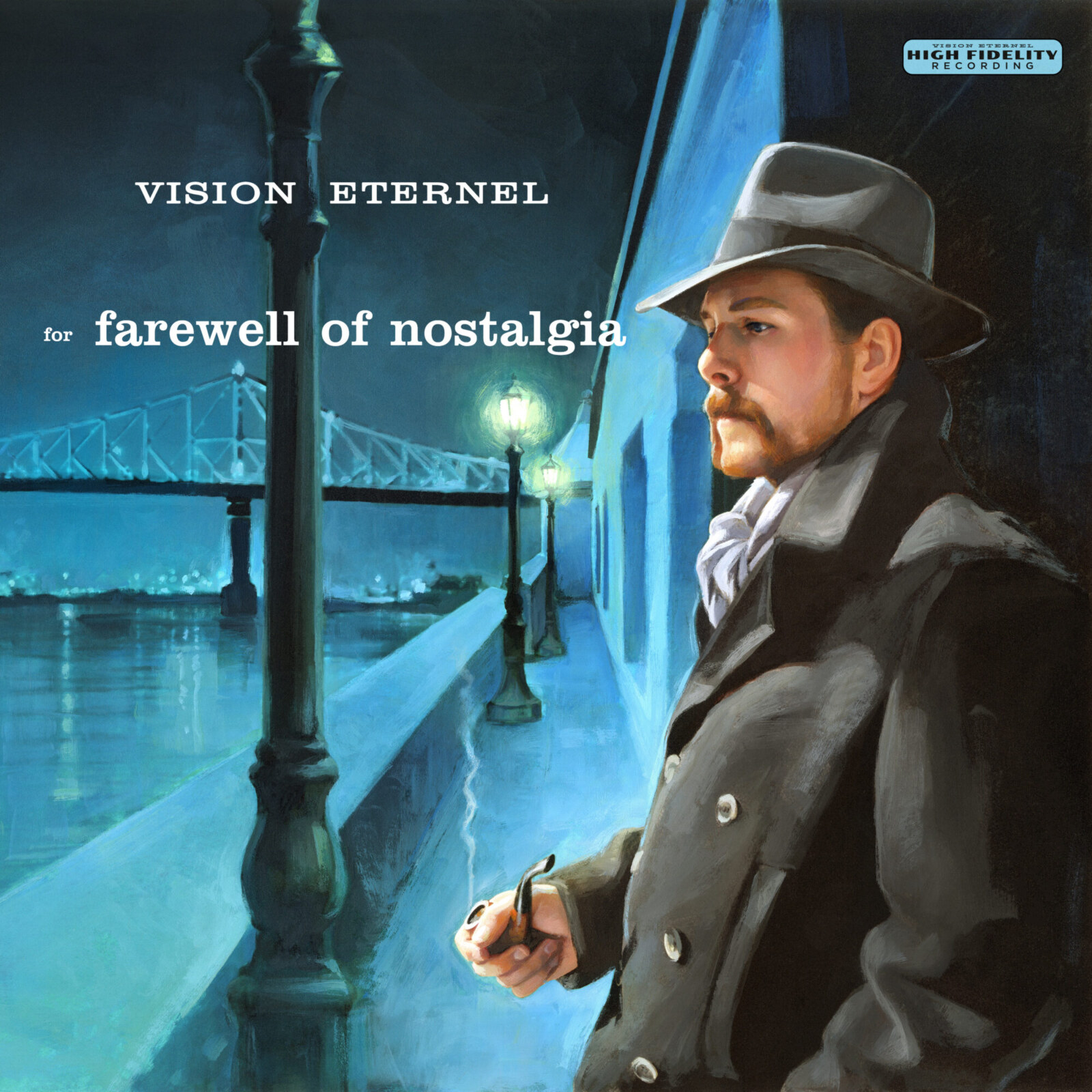
The process of composing and demoing new songs began during the first quarter of 2017, while I was celebrating Vision Eternel’s ten-year anniversary. Prior to that, I had gone through a dry spell; I had been unable to compose new material for roughly two years. What jolted me back into a creative mood was a review of Vision Eternel’s 2015 extended play ‘Echoes From Forgotten Hearts’, written by JJ Koczan and published on his webzine The Obelisk. The review was extremely complimentary and ended with a hope for more Vision Eternel music to come soon. It had been a long time since Vision Eternel had received any publicity and JJ Koczan’s enthusiasm was a much needed boost of confidence.
I intended to spend the spring and summer of 2017 composing and recording new material, then to release Vision Eternel’s sixth extended play before the end of the year. However, I was delayed by the retrospective boxed set, ‘An Anthology Of Past Misfortunes’, which was to be the highlight of the band’s ten-year anniversary. I was finally able to get the boxed set out a year later, in April 2018, after which I immediately resumed working on new material.
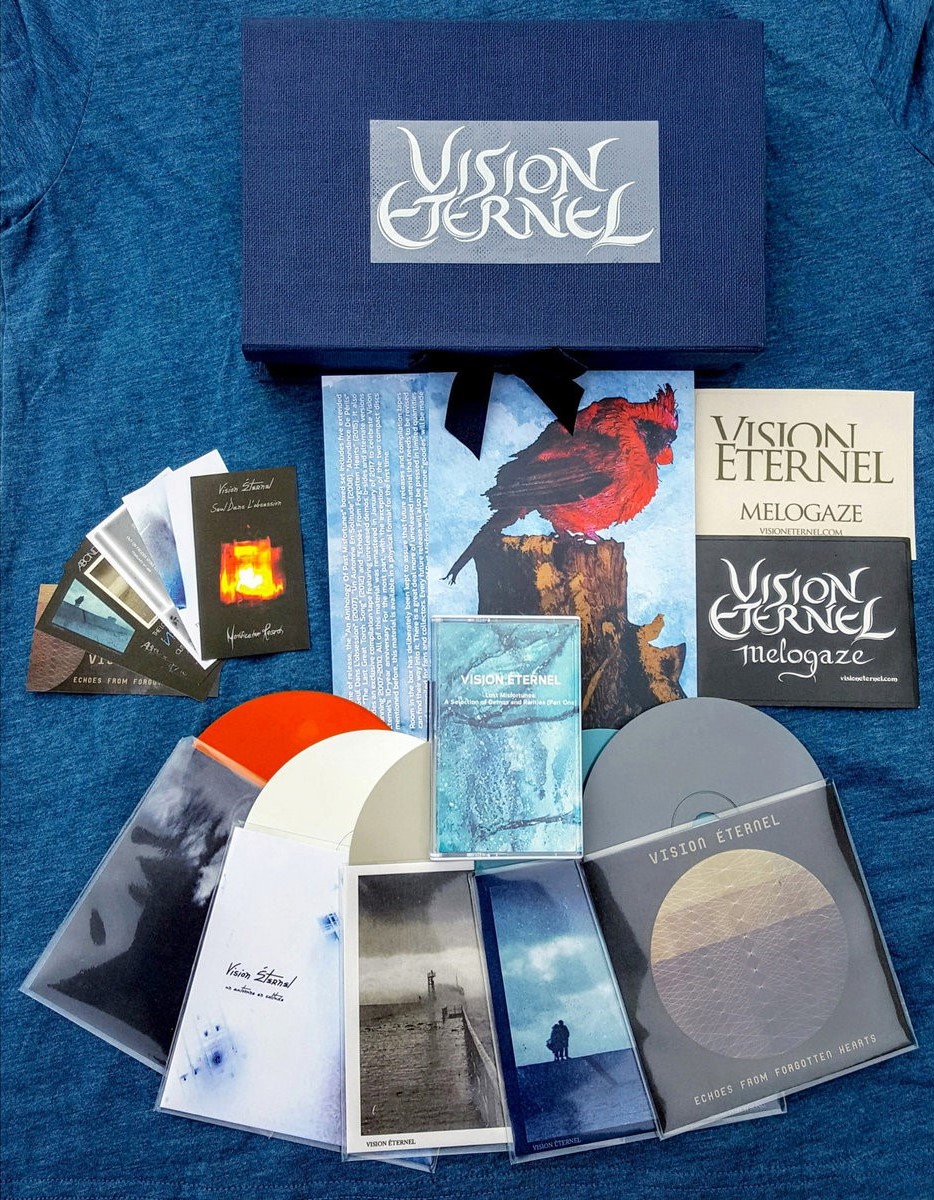
I was only satisfied with about half of the ideas that I had demoed in 2017, so I still had a great deal of composing ahead of me in 2018. Because of that, the original recording session was at times tedious. I spent seven months, from April to October 2018, composing, arranging, recording and mixing about fifteen songs, which I had hoped would piece well together into a concept extended play. But I ran into several issues that would, yet again, delay Vision Eternel’s new release.
Since I was both composing and recording various songs, my mood and emotions changed from one song to another. The songs that were recorded in the spring differed in atmosphere and tone from the ones tracked in the summer; and also from those captured in the fall. I was originally aiming for a wall of sound type of production but there were so many layers and effects to deal with that I was never satisfied with the results. I would return to a song after having recorded another, only to feel the desire to re-mix it all over again. This went on for months. I then realized that there was a lot of noise in my raw tracks, which had been caused by one of my cables going faulty. I did not realize this until ‘For Farewell Of Nostalgia’ was practically completed. I set out to re-record some of the problematic tracks, only to be suddenly plagued by guitar issues.
The amount of complications that I had to deal with in the studio began to negatively affect the way that I saw the release and heard the music; I was losing my intimate connection with the songs. Nevertheless, there were a handful of record labels willing to release the material; some of those songs found their way to Various Artists compilations. Those record labels were also interested in putting out ‘For Farewell Of Nostalgia’ as it was; perhaps they had not noticed all of the mistakes that I was aware of. But I would have regretted releasing the extended play that way. It did not feel right to me. The original version of ‘For Farewell Of Nostalgia’ did not sound like a concept extended play to me; it sounded more like a compilation of random songs. So I made the decision to shelve the release, indefinitely, until I could regroup and find a better way to re-record the songs.
I spent the next twelve months, from October 2018 to October 2019, regrouping and bringing my studio gear and instruments up to date. A couple of my guitars had to get fixed by a luthier and I also purchased a new one. I then went through all of my recordings from 2017 and 2018 to pick out the best content and figure out what would be re-recorded in 2019. I knew that I would be re-recording everything, from scratch, but I wanted to have a blueprint to work from. ‘Moments Of Intimacy’ was the only composition from the 2017 demos that ultimately made it on ‘For Farewell Of Nostalgia’, though its arrangements changed heavily over the years. I was also unhappy with the song that originally opened ‘For Farewell Of Nostalgia’ in 2018, ‘Moments Of Remorse’; that song was dropped and was replaced by ‘Moments Of Rain’.
In early October 2019, my blueprint was ready and I began to re-record Vision Eternel’s ‘For Farewell Of Nostalgia’. This time around, I wanted to be sure that my mood would stay the same throughout the entire recording session so that all of the songs would have the same vibe and atmosphere. In order to contain my mood, I restricted everything with which I came into contact. I was very strict of what I read, what I saw, what I watched, what I listened to and those with whom I communicated. I isolated myself in my studio for the duration of the re-recording session.
One of the things that I knew would help keep me in a sad, yet creative mood was Frank Sinatra’s ‘In The Wee Small Hours’ album. That album had kept me company on many late and lonely nights recovering from heartbreaks. But I purposely did not listen to any music while I was recording; instead, I placed the album next to my computer so that I could admire the artwork and take inspiration from it. I did the same with a painting of my grand-parents cottage, where I had spent most of my summers as a child; it was a wonderful place that created some of my fondest memories.
Another thing that I did to contain my mood was to watch a lot of dramatic films before and after the recording sessions. But I was also very strict about which films I allowed myself to watch. I decided to solely watch Frank Sinatra’s films during the isolation period because he is one of my favourite actors and his drama films are very emotional. I repeatedly watched ‘From Here To Eternity’, ‘Some Came Running’, ‘The Manchurian Candidate’, ‘The Detective’, ‘The Man With The Golden Arm’ and ‘Pal Joey’, as well as several of his other films.
The inspiration behind the actual composition of the songs on ‘For Farewell Of Nostalgia’ was definitely heartbreak and love-related; but the inspiration behind the mood, tone and atmosphere, the sound of the recordings themselves, is attributed to Frank Sinatra’s acting. The way that I felt after watching some of his films was captured on those recordings. I get very sentimental after watching certain films, it is a form of escapism for me; I return from a wonderful place, having been completely disconnected from my surroundings. This is especially the case with the films of Alfred Hitchcock, Cameron Crowe and Woody Allen. I plan to explore some of those themes on Vision Eternel’s next concept extended play.
Because everything was so well planned, the re-recording of ‘For Farewell Of Nostalgia’ was very efficient. Instead of taking seven months to complete, like it had in 2018, the re-recording of the extended play was finished in just a month-and-a-half. The result was incredible; the songs sounded so emotional and heartfelt. The arrangements had been polished over time and I also got to add guitar leads to the songs, which were not present on the 2018 versions. That added a whole other layer of melody and sentiments. I was very proud of the second version of Vision Eternel’s ‘For Farewell Of Nostalgia’ and I looked forward to sharing it with my fans.
I continued to mix and edit ‘For Farewell Of Nostalgia’ for another month, until I was entirely satisfied with every little sound. Meanwhile, I wrote a short story to accompany the release, which is included in the physical editions of the extended play instead of lyrics. The short story recounts the events that inspired the composing of the music. All of this was completed by the end of December 2019.
In January 2020, Carl Saff mastered ‘For Farewell Of Nostalgia’ at Saff Mastering. Carl was the only person that I approached to master the release because I was such a big fan of his work with Castevet, the Chicago emo band. I knew that he would be able to get the sound that I was looking for. I also spent the month designing a physical press kit and an electronic press kit, to shop the release to record labels, and filming and directing a short music video titled ‘An Introduction To For Farewell Of Nostalgia’. The video contained snippets of the songs backed by a snowy river scene; it was filmed near my studio.
There was then a lengthy process of finding an illustrator for the extended play’s cover art. In all, I spent from November 2019 to April 2020 dealing with different illustrators, until I finally landed on Michael Koelsch. I discovered Michael through his work with The Criterion Collection. He is an incredible pulp artist and we connected immediately. Since Frank Sinatra’s album ‘In The Wee Small Hours’ had helped so much during the re-recording session, and since it is also one of my favourite albums, it made sense to pay homage to it. ‘In The Wee Small Hours’ has an immediately recognizable visual presence; it stands out next to other releases. So I wanted to be respectful of it; I did not want something cheap like my own face painted over the same cover. That would have been an insult to Frank Sinatra. So the cover art that Michael Kolesch painted for ‘For Farewell Of Nostalgia’ represents things that were important to me and that reflect the concept of the extended play. It is similar to ‘In The Wee Small Hours’ but not an exact duplicate.
Once all of this was completed, I shopped the release around to record labels; that took another month until I finally secured a compact disc releasing deal with Somewherecold Records and a compact cassette releasing deal with Geertruida. I then needed to design the layouts for those physical editions; this included a new painting by Rain Frances to accompany the short story booklet. It is completely different from the cover art but the colours perfectly fit within the concept and really ties it all together. Rain’s paintings also appear on the bonus tape in the Compact Cassette Edition and on the CD face in the Advanced Compact Disc Edition.
It took the record labels another month to get the release masters out to the pressing plants and back to their headquarters; everything was ready, barely in time for the September 14, 2020 release date. So that is how it took four years to put out a thirty-two minute concept extended play!
As for the gear and equipment that I use, I must admit that I am rather secretive about it. I do not mind revealing that I do not use any keyboards, samplers, sequences, synthesizers or anything digital like that; I only play guitar and bass on Vision Eternel recordings. I am also not opposed to dropping a few brand names that I use, like Renegade, Schecter, Jackson, Ibanez, Peavey, DiMarzio, Floyd Rose, Heet Sound, Boss, Dunlop, Ernie Ball, Levy’s, Analysis Plus, Sennheiser, Focusrite and Ableton.
“Vision Eternel’s ‘For Farewell Of Nostalgia’ is the most elaborate concept release that I have so far conceived.”
It’s a conceptual EP.
Vision Eternel’s ‘For Farewell Of Nostalgia’ is the most elaborate concept release that I have so far conceived. I have worked on many concept releases in the past, and all Vision Eternel extended plays are conceptual releases as well, but ‘For Farewell Of Nostalgia’ is a step above the others. There is a concept within a concept, within a concept. It might sound complex but it really is not.
‘For Farewell Of Nostalgia’ fits conceptually within the Vision Eternel story-line; it picks up where ‘The Last Great Torch Song’ left off, shortly after that previous heartbreak. ‘For Farewell Of Nostalgia’ documents another broken heart, one about falling in love-at-first-sight. There was a lot of pain following that brief romance and I wanted to capture its beauty and sadness. I not only recorded this extended play about it but I also wrote a short story that recounts the events. The short story is included in a booklet as part of the physical editions of the release. The extended play is also a Dear John letter to Montreal, the city where I lived for most of my young adulthood.
Both of those themes are represented in the title of the extended play; ‘For Farewell Of Nostalgia’ is meant to be interpreted as for the well-being of nostalgia, meaning that I am not forgetting those memories, I am looking back on them fondly, in nostalgia. I also wanted to bid farewell to Montreal by saying “Thanks for the memories, the wonderful and the miserable; now good-bye”.
The song titles also play an important part of the concept; they represent the different phases, the chapters of the story itself. ‘Moments Of Rain’, ‘Moments Of Absence’, ‘Moments Of Intimacy’ and ‘Moments Of Nostalgia’; boy meets girl, boy loses girl. But within those songs, there are seventeen sub-chapters. Each segue, or part, within the songs has a different sub-chapter, a different title.
That extended track listing is only detailed in the physical editions of the release because it is meant to be paired with the chapters and sub-chapters of the short story. I really wanted to create an interesting release; a situation where people would have to sit down and dedicate focus to it. I remember when I used to buy physical releases, it was an event. To begin with, I had to find a ride to the mall to get to the record store; then exploring the shelves and bins for covers that attracted my attention. Once I picked out the ones that I wanted, there was still an agonizing waiting period at the cash register until I could finally get back into the car and remove the shrinkwrap. On the drive back home, I would quickly glance through the artwork and the booklet, building up my excitement to hear the release. Once home, I would put the record on and sit down to read through the entire booklet while listening to the music for the first time. I would read the lyrics, the recording credits, the band members involved…
Of course, I know that the majority of people will be hearing my music online for the first time; that is perfectly fine and I think that the release holds up extremely well on its own, without the entire concept divulged. But for those who become fans of the work and procure the physical editions, there is so much to be explored and discovered. The physical editions of ‘For Farewell Of Nostalgia’ offer an old-fashioned, conceptual listening experience.
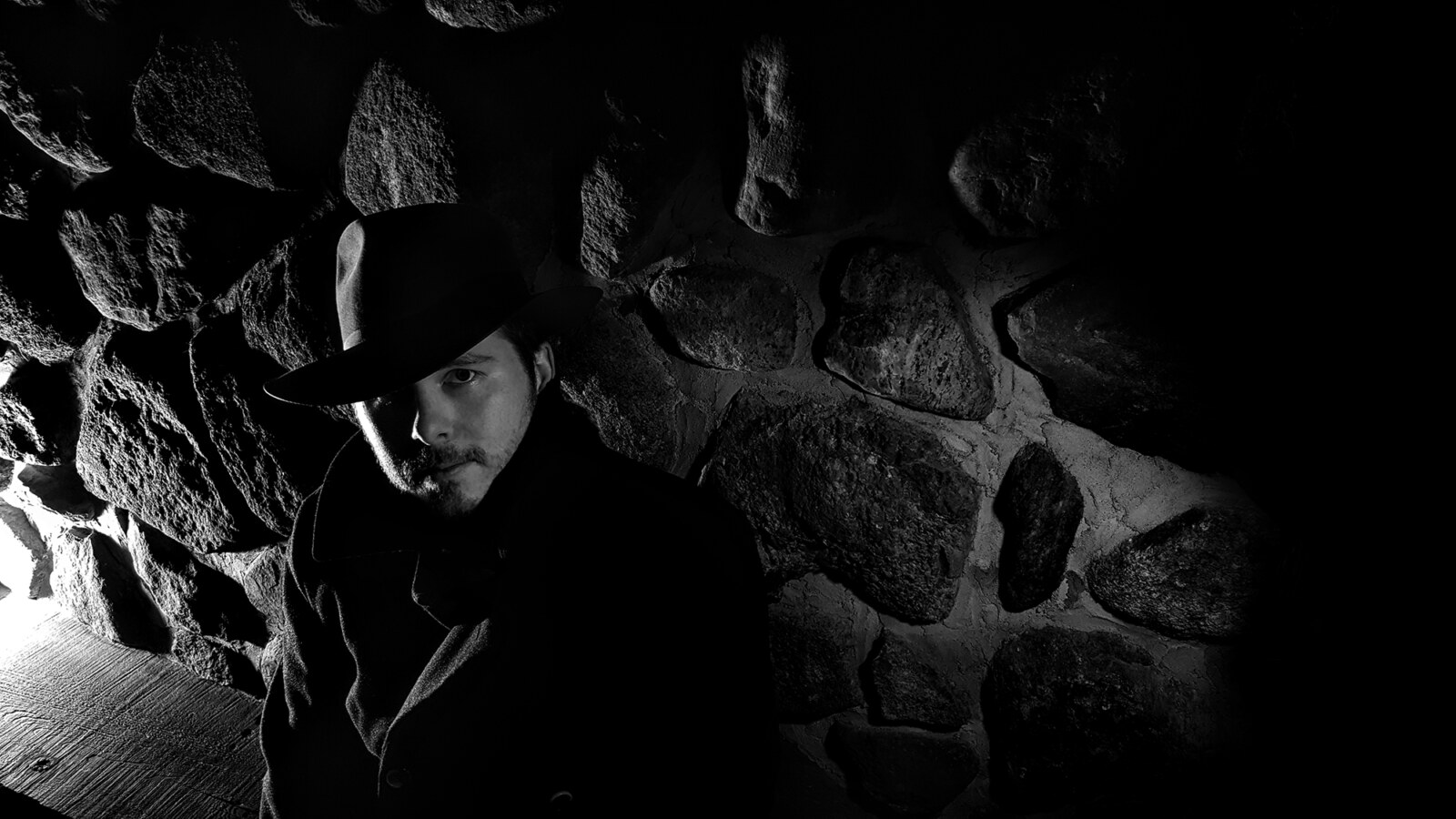
You have released quite a bunch of other EPs with the band Vision Eternel. What would you say is the main difference between older and newer material?
I think that Vision Eternel’s ‘For Farewell Of Nostalgia’ will sound very familiar and comforting to established fans of the band. But it also completes a transition of compositional style which began nearly ten years ago. By comparison, early Vision Eternel material was minimal; one or two guitar tracks spanning one to two minutes. I would no longer apply the term minimal to the recent compositions or recordings. I do not think that Vision Eternel is experimental by any means, I see it as straight-forward music with a somewhat accessible sound, but the songs have gotten more elaborate during the last several years. There are many textural layers and that, to me, no longer reflects minimalism.
This is partly due to the fact that I put all of my other bands and projects on hold to focus solely on Vision Eternel. I used to be active in several bands but I felt that I was stretching myself too thin. I wanted to be able to focus and dedicate all of my passion and emotions to a single band. Since Vision Eternel has always been my most personal, intimate and favourite band, it made sense to put all of my efforts into that one. Once I did that, my inner creativity accepted the fact that I could compose uninhibitedly again, as I had when Vision Eternel first started, instead of limiting myself to what Vision Eterenl was supposed to sound like, after years of establishing a pattern and a distinct sound. I do not mean that I invented something new with Vision Eternel, but I do think that I have my own guitar-playing style and sound. Vision Eternel will always sound like Vision Eternel because that is how I play guitar.
One of the most important things that I was able to incorporate into new Vision Eternel compositions was the long, repetitive, almost hypnotic, coda and segue. This was an element that I used to employ heavily in my dark ambient band Soufferance. I really loved songs with that kind of build up, but since Vision Eternel originally produced short songs, it felt out of place. The first Vision Eternel song to showcase that element was ‘Sometimes In Absolute Togetherness’ from the 2012 extended play ‘The Last Great Torch Song’.
The next time that I utilized that style of arrangement was on ‘Echoes From Forgotten Hearts’; but that was because I was approached to personally compose the soundtrack to a short film, not compose it as a Vision Eternel release. So I simply composed and performed the songs as they came naturally to me. It wound up getting released as a Vision Eternel extended play because the short film fell through and I loved the music far too much to let it go unreleased. I felt that, out of all of my bands, it sounded closest to Vision Eternel’s sound, so it was re-conceptualized into an extended play.
Having slowly broken the barriers over the years, I felt free to finally incorporate the elements that I liked best from each of my bands into Vision Eternel. The repetitive codas and segues also make for longer songs. Past Vision Eternel releases typically had a total length of between ten to fifteen minutes, divided into one to two minute songs; but ‘For Farewell Of Nostalgia’ is thirty-two minutes in length, with the songs ranging from five to eleven minutes each. I briefly considered releasing ‘For Farewell Of Nostalgia’ as a double-extended play; seeing that it is twice as long as prior Vision Eternel releases, that might have been appropriate.
Another element that I brought over from other bands is the textural lead guitar. That was something that I normally employed with Citadel Swamp and Éphémère; since I was not the only performer on their recordings, I needed to find ways to texture my guitar parts into the songs. Adding this feature to Vision Eternel songs really added a whole new level of emotions, sentiments, beauty and presence. I feel that the songs that appear on ‘For Farewell Of Nostalgia’ are the best songs that I have ever composed.
Are you involved in any other bands or do you have any active side-projects going on at this point?
Since December 2016, Vision Eternel has been my only active band. But for the ten years prior to that, from roughly October 2006 to December 2016, I was active in multiple bands and projects simultaneously. I was very busy musically for most of that period; I would compose and record a release with one band, then once that was completed and waiting to be released, I would immediately begin working on another release by another band. This went on for several years but I found that I was no longer able to compose enough quality material. I had writer’s block (or more exactly, composer’s block) for about two years before I decided to focus on only one band.
In December 2016, Citadel Swamp was officially brought to an end, while Soufferance was quietly and unofficially put to sleep. My atmospheric black metal band Vision Lunar was put under an indefinite hiatus, but I do not consider it terminated because I know that I will want to compose metal music again in the future and that will be my outlet. Vision Lunar has gone through several hiatuses over the years so I am confident that it will fare well when it is time to bring it back. I have been sitting on a few ideas over the last five-or-so years for a Vision Lunar full-length album.
My priority right now, and for the next couple of years is exclusively with Vision Eternel and the promotion of ‘For Farewell Of Nostalgia’. Since the release took so long to complete, I feel that it deserves a decent amount of promotion and exposure before I begin working on a follow-up. I do have a few ideas for Vision Eternel’s seventh concept extended play, but it will be a few years before it comes into plan. I also very much want to get Vision Eternel’s ‘For Farewell Of Nostalgia’ out on vinyl. I am actively looking for a record label with which to release it.
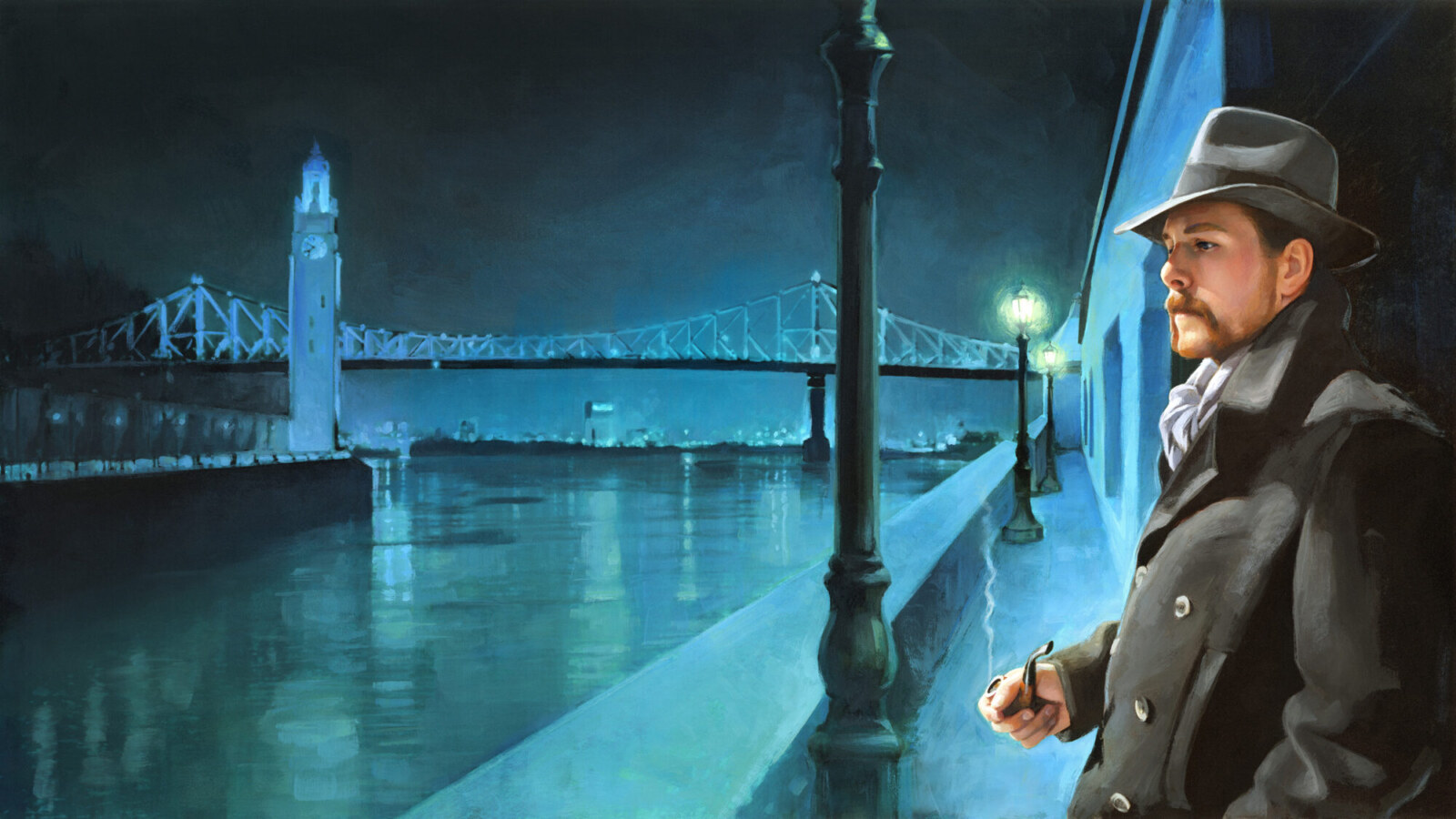
To end this interview, what are some of your favourite albums?
I have a tendency to create lists of things like this for my personal archives. So I do have a longer version of what I will share below, which I refer back to at times. However, for the sake of keeping things succinct, I will narrow the list down to solely items that are considered true albums, as in full-length releases, as per your question. This will exclude extended plays, soundtracks, singles and demos.
Alexisonfire – ‘Watch Out!’
Bathory – ‘Hammerheart’
Bathory – ‘Twilight Of The Gods’
Boys Night Out – ‘Trainwreck’
Castevet – ‘Summer Fences’
Castevet – ‘The Echo & The Light’
Dissection – ‘Storm Of The Light’s Bane’
Eleventh He Reaches London – ‘Hollow Be My Name’
Eleventh He Reaches London – ‘The Good Fight For Harmony’
Eliminator – ‘And The Brokenhearted Balladeers’
Eliminator – ‘Breaking The Wheel’
Eliminator – ‘The One They Were Waiting For’
Elton John – ‘Elton John’
Elton John – ‘Madman Across The Water’
Elton John – ‘Tumbleweed Connection’
Faith No More – ‘Angel Dust’
Faith No More – ‘The Real Thing’
Frank Sinatra – ‘In The Wee Small Hours’
Frank Sinatra – ‘Only The Lonely’
Judas Priest – ‘Painkiller’
Killswitch Engage – ‘The End Of Heartache’
Mother Love Bone – ‘Apple’
Rosesdead – ‘Stages’
Senses Fail – ‘From The Depths Of Dreams’
Swans – ‘Love Of Life’
Swans – ‘White Light From The Mouth of Infinity’
Talking Heads – ‘Speaking In Tongues’
The Holly Springs Disaster – ‘Motion Sickness Love’
The Smashing Pumpkins – ‘Machina / The Machines Of God’
The Smashing Pumpkins – ‘Mellon Collie And The Infinite Sadness’
The Smashing Pumpkins – ‘Siamese Dream’
The Used – ‘The Used’
Tom Waits – ‘Closing Time’
Thanks, Alexander Julien.
Klemen Breznikar
Vision Eternel Official Website / Facebook / Instagram / Twitter / Bandcamp / YouTube / Spotify / SoundCloud
Geertruida Official Website / Facebook / Instagram / Twitter / Bandcamp / YouTube / Spotify / SoundCloud


